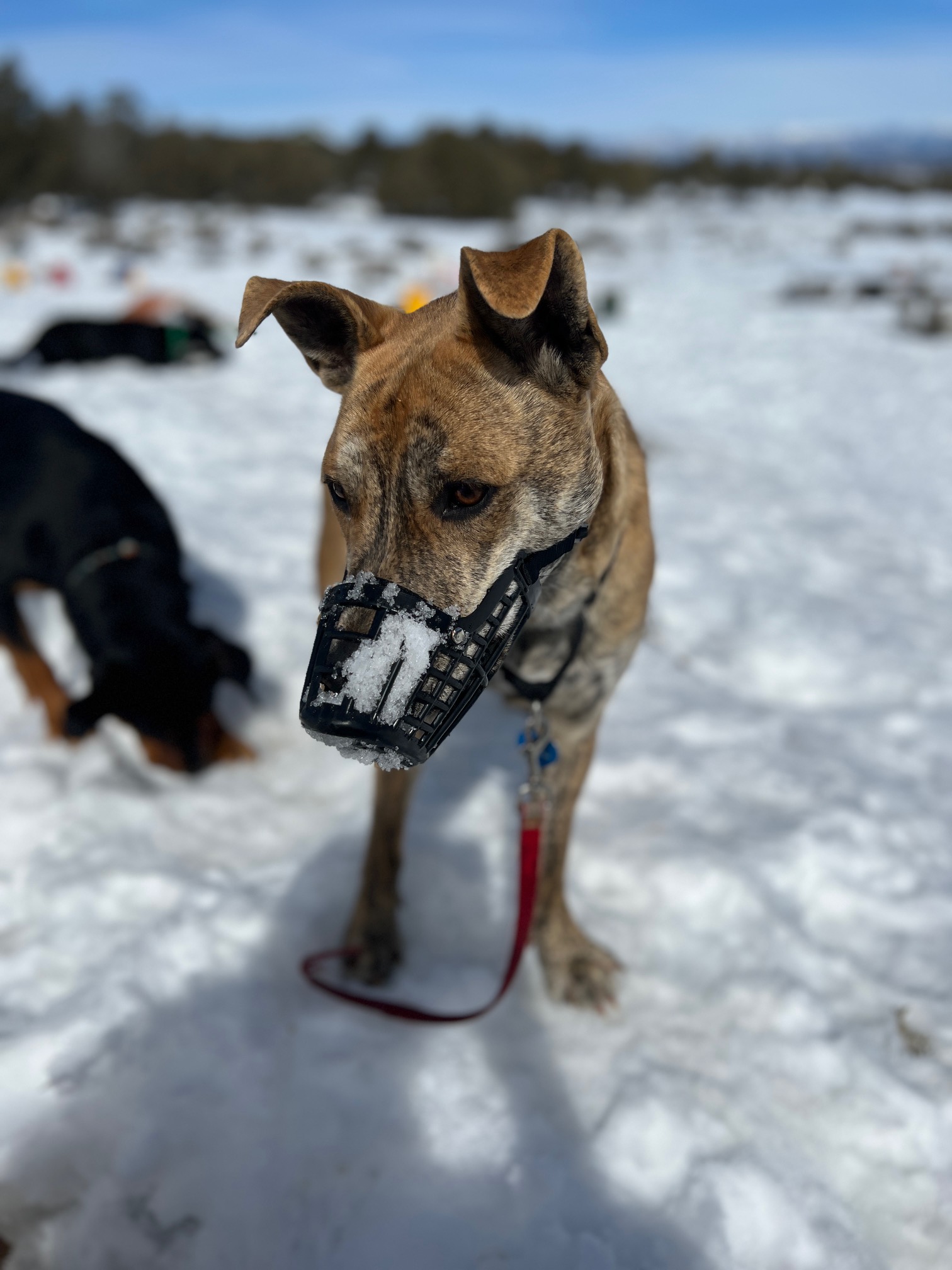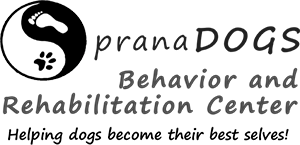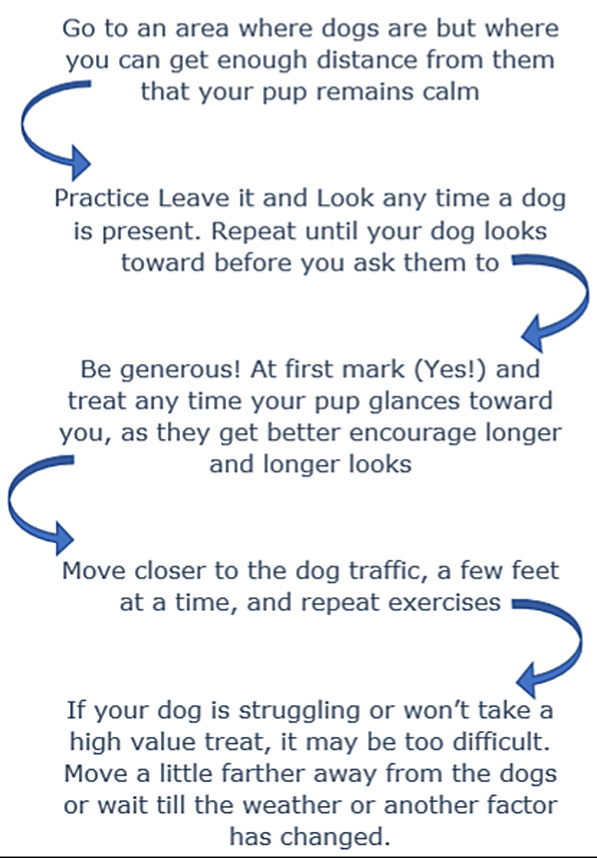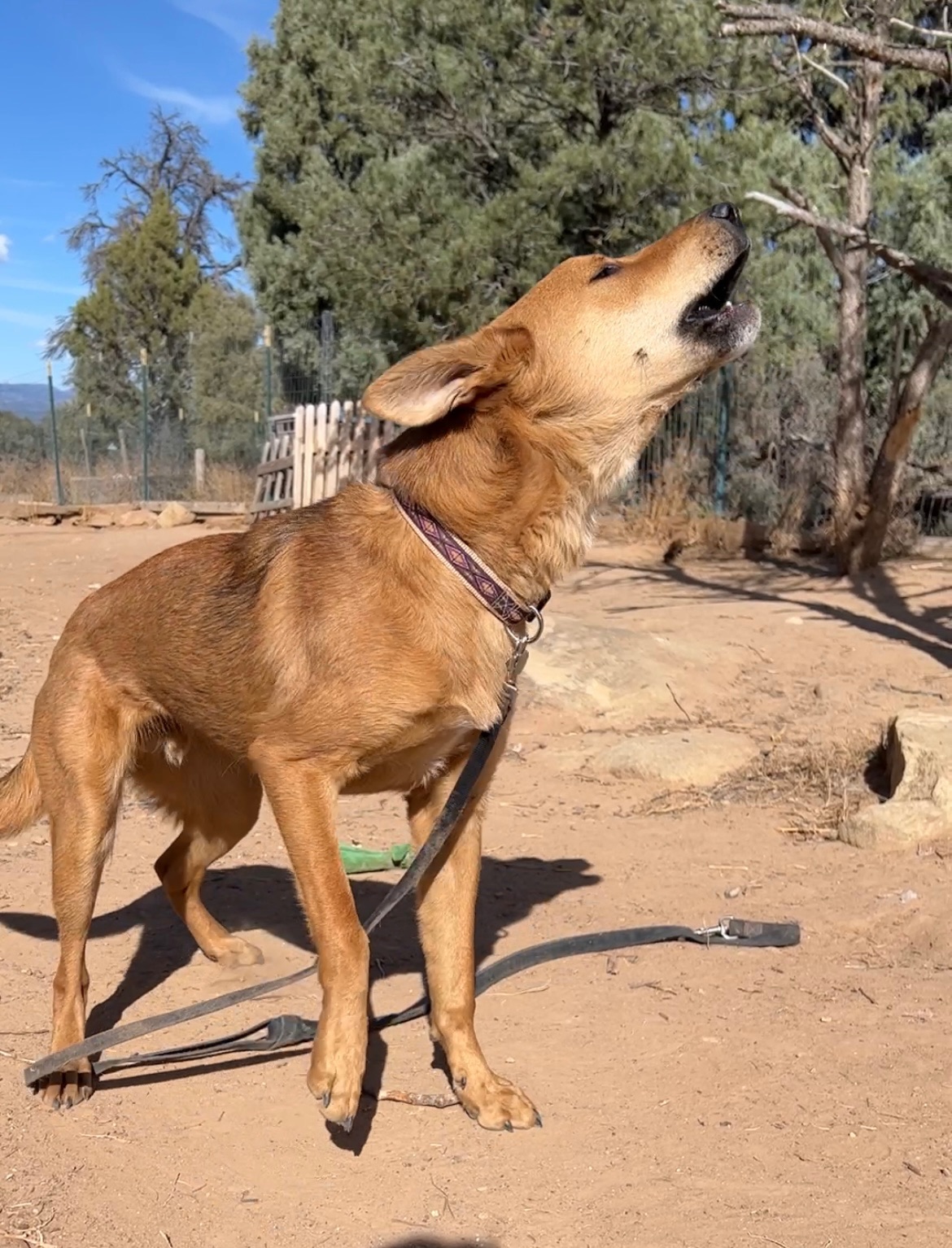Reactive Dog Resources
Try the Exercise
#1 Teach your dog two behaviors: Leave it and Look;
then practice in every room of your house, on every piece of furniture, when you’re sitting, standing, upside down, when you’re in a bad mood or a weird one, when it’s raining outside or the wind is blowing. Then move outside to the playground, the school, wherever you’re going to frequent. Practice until your dog is so darn comfortable that it’s second nature. Remember that it’s important to practice when things are different for your dog, different in the environment and different with you.
#2 Go to a controlled place;
a place where dogs walk by, but where you can get some distance from them. You need a place or time that has enough dog traffic to give your dog some repetition, but enough room to not stress your pup out.
Practice Leave it and Look over and over and over again. Ideally until your dog looks at you as soon as they see a dog (ideally before you even say anything). Oh, and this is not the time to be stingy with treats! Tasty morsels every time your dog glances in your direction – don’t expect long looks here, we just need him/her to be able to take their gaze away from the other dog, even just for a moment.
#3 Practice in new places:
Once your pup automatically looks at you 50% of the time or more when they see another dog, it’s time to practice in different settings, with different distractions present and so forth.
And remember if your dog is struggling, you’ve made it too difficult. Just because you can’t tell what’s wrong, chances are something is off. Either take a break or make it easier. Set your dog up for success!
Want to Dig Deeper…
Being with your dog is one of the most rewarding opportunities we have; that is unless your dog gets crazy over certain things, and can’t be made to calm down. Then it can be a nightmare. Most reactivity is due to one of two things: fear or aggression. Fear being the most common. To work through these issues, it’s important to provide our dogs with a safe environment, and work to change their associations with the things that put them on guard.
Before you begin: Management vs Training
Managing your dog means setting up the environment, and your life, in such a way as to ensure nothing bad can happen to them, and they in turn cannot do damage to others. For example, until I’m sure a dog is over their chewing phase, they’re monitored while in rooms with the decent furniture.
Actually most of us use management more than 80% of the time! Management is the key to having fun with your dog, and not losing your cool every time you get home. A crate is a common form of management, the dog is confined until they learn not to be destructive when you’re away.
At pranaDOGS, the management tools we use include: belly bands, head halters, no-pull harnesses, and for dogs who have bitten in the past – muzzles. And treats, lots of treats! Consider this, you’re not just trying to get your dog to do something, you’re trying to get them to give up something that has worked for them – that’s asking a lot, for any of us. Do your dog a favor, and stock up on cheese sticks, chicken and frozen meatballs.
If your dog barks or lunges or is completely out-of-control on the leash, use a Gentle Leader head halter. Gentle Leaders work by fitting around the dogs mouth and attaching to the leash. If your dog lunges or pulls, their mouth’s are closed by the pressure on the leash, and they are turned back toward you. Often when dogs have success with their mouths (barking, lunging, etc) they don’t try any other coping mechanisms. But if we can get the mouth of the equation, then we can get them to look away and begin to focus on you.
Be sure to use tools that help you! Prong, pinch or so-called “training collars” are negative reinforcement and inject discomfort – and even pain – into an already tense situation. I’ve seen more than one reactive dog lose it with one of these collars on, only to thrive once the negative collar was removed.
Use management tools when you’re zoned out, when you’re on the phone or when you’ve had a bad day. They’re also a great way to start out your walk with an overly happy and active dog. Half-way through your walk, change your dog over to their flat collar or harness to give them a chance to do well. If they struggle, go back to the management tool, and if they do well, reward them!
To successfully train your dog, practice Calm Confidence. Let’s face it, reactive dogs engage our internal radar, where we constantly strive, to see dogs before getting caught off guard. Because of this, we’ve developed our own coping mechanisms; crossing the street, tightening up our hold on the leash, etc. Many people actually signal to their dog that another dog is near, rather than disguising it.
Just like your pup, you need to build your confidence back up as well. Start by taking short walks, ideally in places where you won’t see any other dogs. Practice communicating with your dog – practice before you need it – and if you find yourself getting anxious, take a deep breath and shake the tension out of the leash – and your body!
Remember…
If you have your dogs back, they don’t need to respond;
be sure to always look out for them (even if you’re not going to be around!!)
Bodies Between Dogs!
Take a breath!
Chances are you’re bringing something to the equation, so be sure to work on relaxing yourself, finding ways to keep it fun and light, and to not add stress to the situation
If you’re going to turn away from something, Turn into your Dog
If things are going sideways, Get Distance.
If you can’t get enough distance, get your dog up onto something for some height, or get down to their height for support.
The goal is success;
so set yourselves up by bringing along some chicken, liver, cheese or hotdogs – and be generous. We’re trying to overcoming a behavior that has been working incredibly well, so we need something strong to break the pattern
Practice Leave it!
before you go out for your walks; it’s tough to remember how to do something if you only do it when you’re freaked out. During your walks, continue to practice Leave it! as well as sitting, looking at you, touching your hand, etc
Don’t let your dog get pressured or cornered
Understand that this is going to take some time, especially if multiple people walk the dog. Many dogs need between 20 and 200 successful repetitions before they begin to overcome their reactivity.



